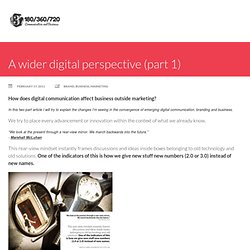

Zite incident shows why publishers need to enable automatic, controlled content distribution. In an era of free, frictionless content distribution, how can creators of that content be paid for their work?

The question was highlighted on Wednesday as 11 major media organizations — from Dow Jones Co. to Time — sent a letter to news aggregator Zite ordering the company to stop what the news outlets characterized as pervasive copyright infringement. Zite pulls Web content from a wide variety of sites, reformats it, and displays it — without the ads — within its app. No one can argue about the infringement; Zite has already changed the way it presents the complainants’ content. But presentation is not the reason consumers downloaded the iPad app 120,000 times in the first week. The real value of the app is its ability to predict which stories will appeal to each user. For publishers, the problem is that Zite is really, really good at personalization and filtering.
What efforts have major media companies made to build or enable their own innovative news consumption products? A wider digital perspective (part 3: new business models ) How does digital communication affect business outside marketing?

In this three-part article I will try to explain the changes I’m seeing in the convergence of emerging digital communication, branding and business. Read part 1 here.Read part 2 here. I’ve divided the future of digital, the way I see it, into three concepts. In the process I have purposely left out the natural extension of traditional digital communications as it is already accepted, debated and in excellent shape. And I’ve focused on “emerging” concepts. 3. From part two:“The main thing though is not … trying to better the experience by adding a service to the product.
The problem with marketing is that it is perceived as a cost. “I also suggest that the problem with most [digital] initiatives today is that they are designed as marketing and by that inevitably will be perceived as a cost. In short: Digital communications needs to move from selling products to being products. How can we accomplish this? A wider digital perspective (part 2: digital services) How does digital communication affect business outside marketing?

In this three-part article I will try to explain the changes I’m seeing in the convergence of emerging digital communication, branding and business. Read part 1 here. I’ve divided the future of digital, the way I see it, into three concepts. In the process I have purposely left out the natural extension of traditional digital communications as it is already accepted, debated and in excellent shape. And I’ve focused on “emerging” concepts. 2. I think it is important to point out this relationship as digital services is not a brand new concept lifted out of thin air with no goal or intention.
Not to make it sound as if we just added ones and zeroes to something old… There are of course important differences: “Customer service is a series of activities designed to enhance the level of customer satisfaction – that is, the feeling that a product or service has met the customer expectation.” – Turban et al. (2002) 1. 1. A. B. 2. A. A wider digital perspective (part 1) How does digital communication affect business outside marketing?

In this two-part article I will try to explain the changes I’m seeing in the convergence of emerging digital communication, branding and business. We try to place every advancement or innovation within the context of what we already know. “We look at the present through a rear-view mirror. We march backwards into the future.” - Marshall McLuhan This rear-view mindset instantly frames discussions and ideas inside boxes belonging to old technology and old solutions. A point already wonderfully articulated by Breakfast: “Some people call what we do “the Internet of things” or “web 3.0.”
(And yes, I am as guilty as anyone else…) Consequently this is making it hard to understand and see the opportunities offered by digital and how these can have different effects on business.